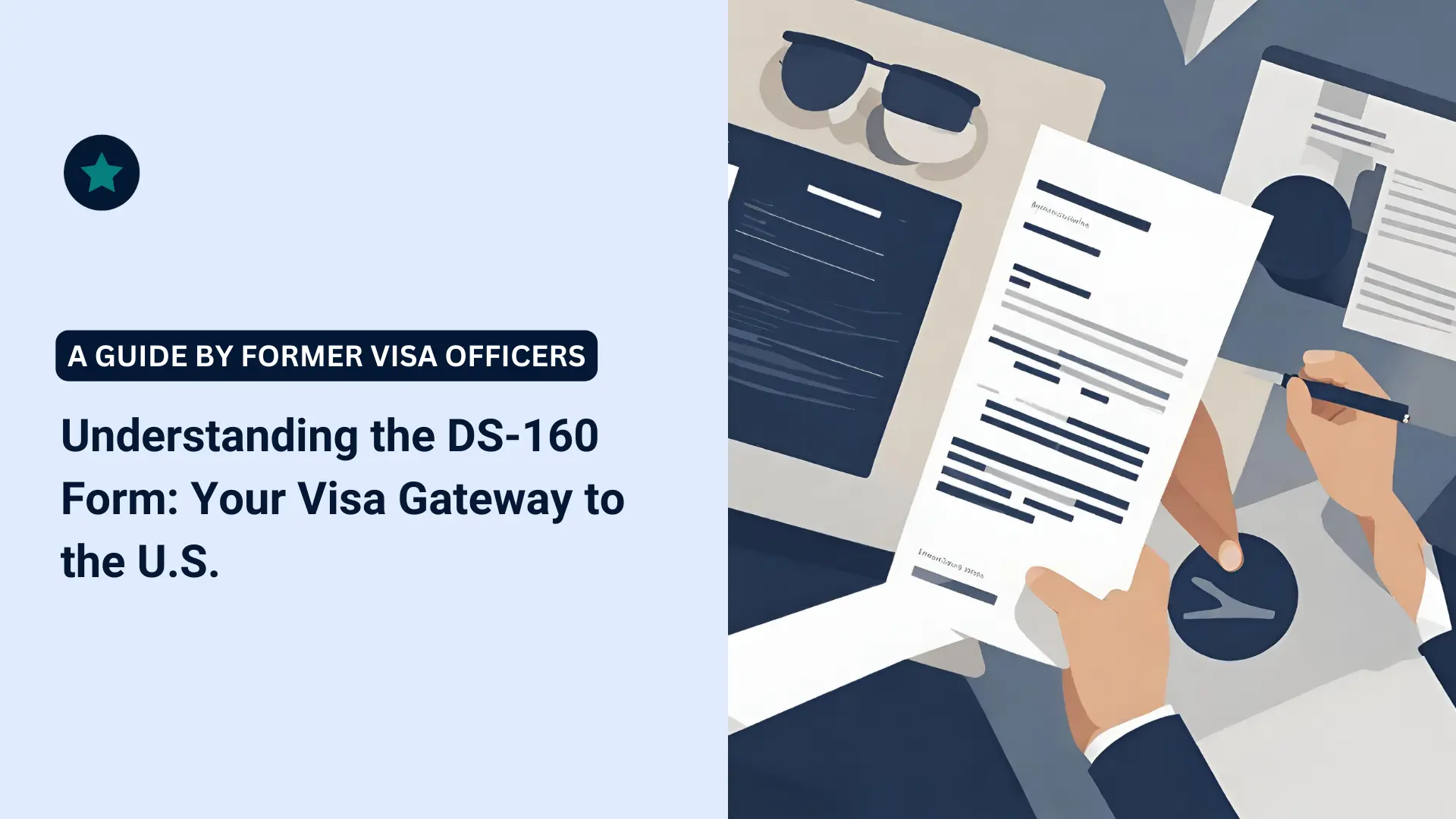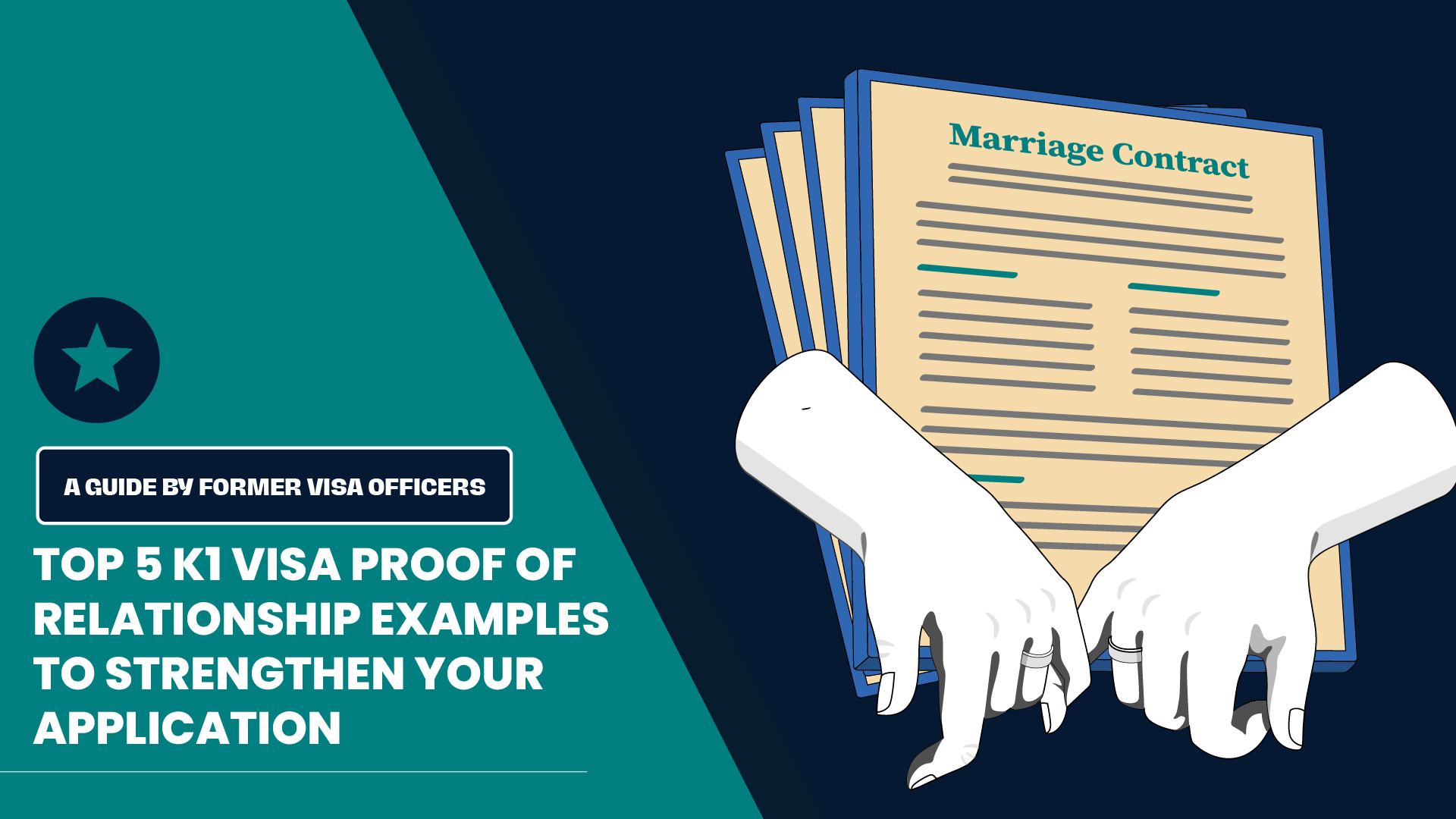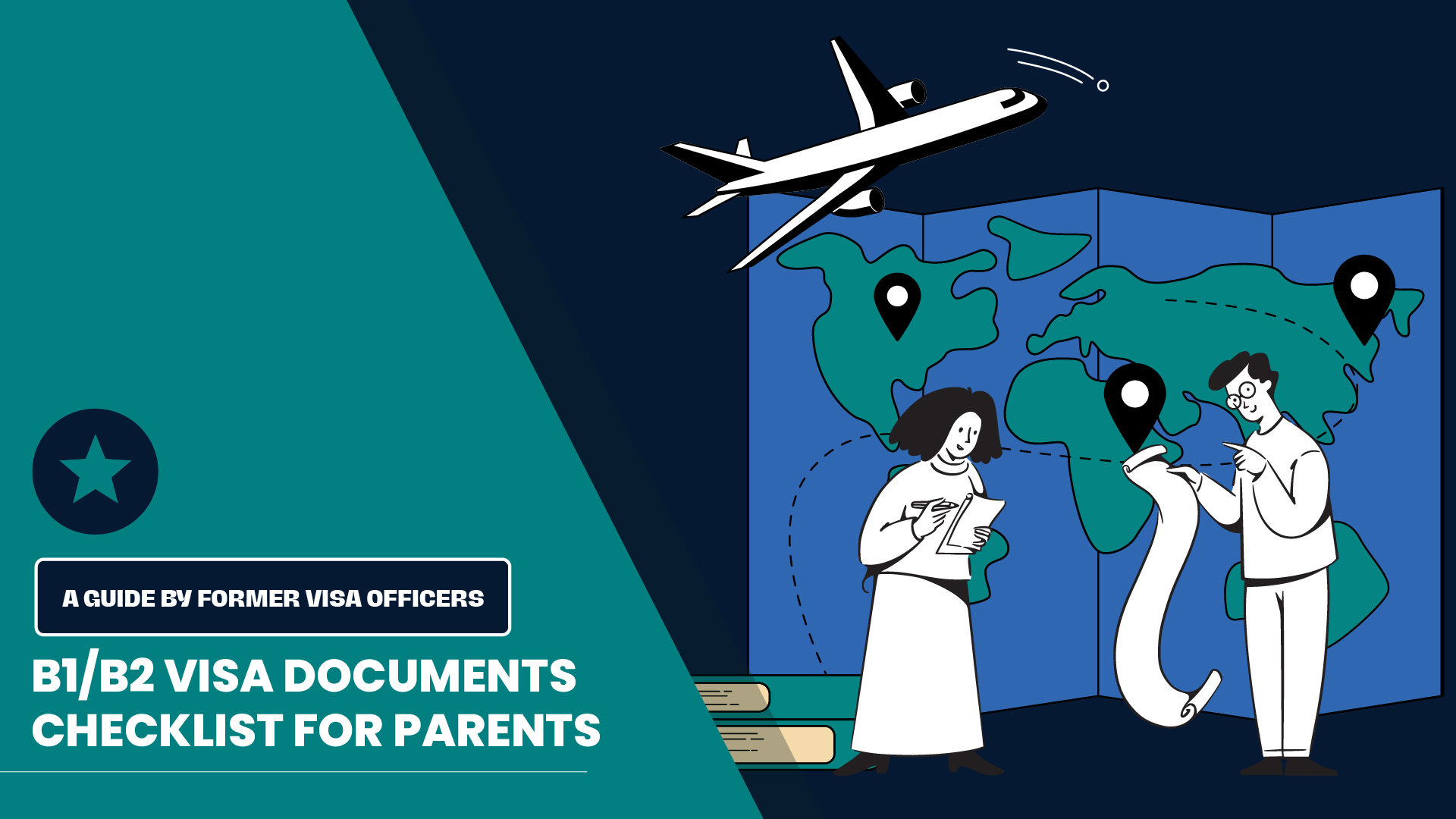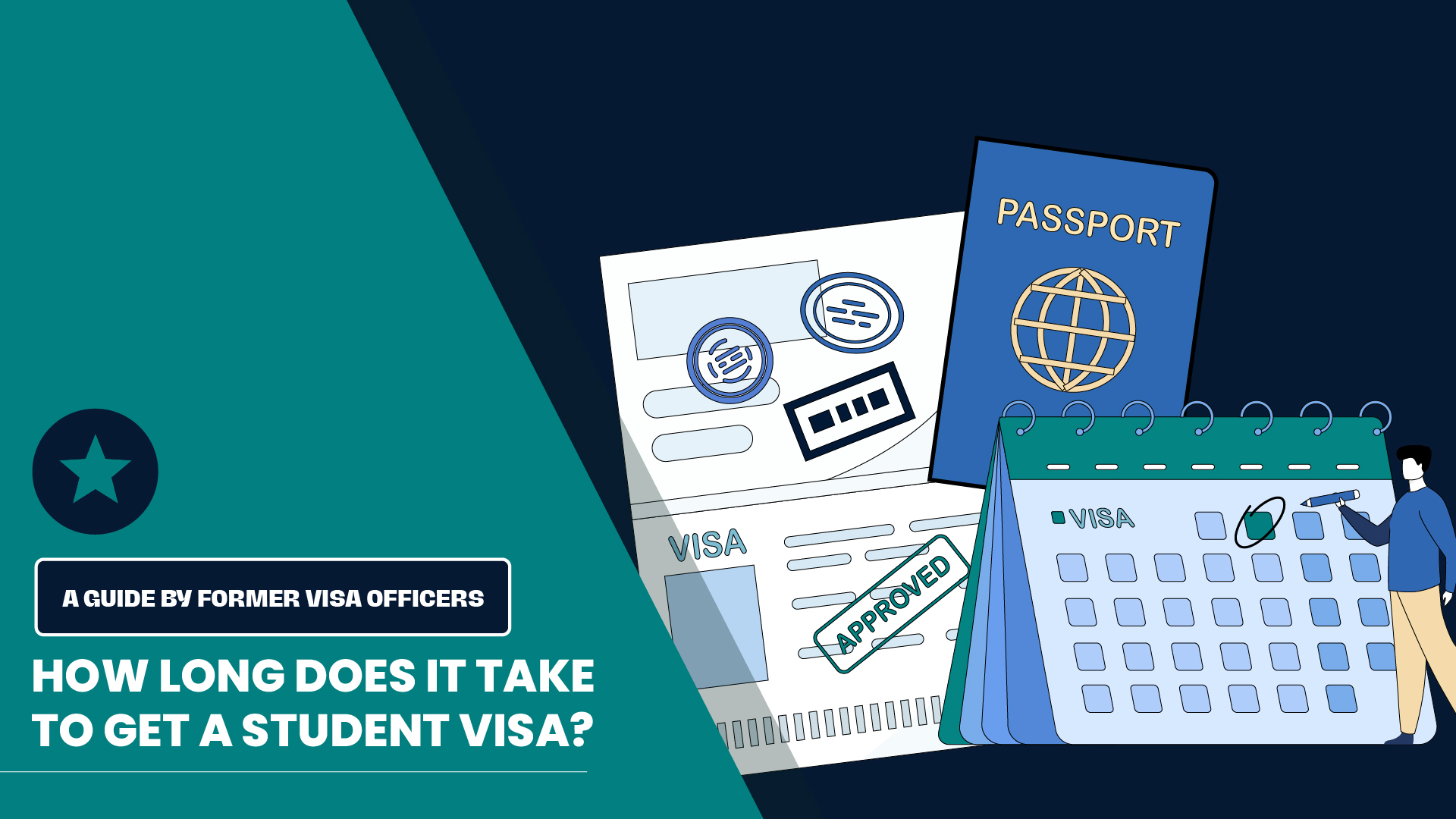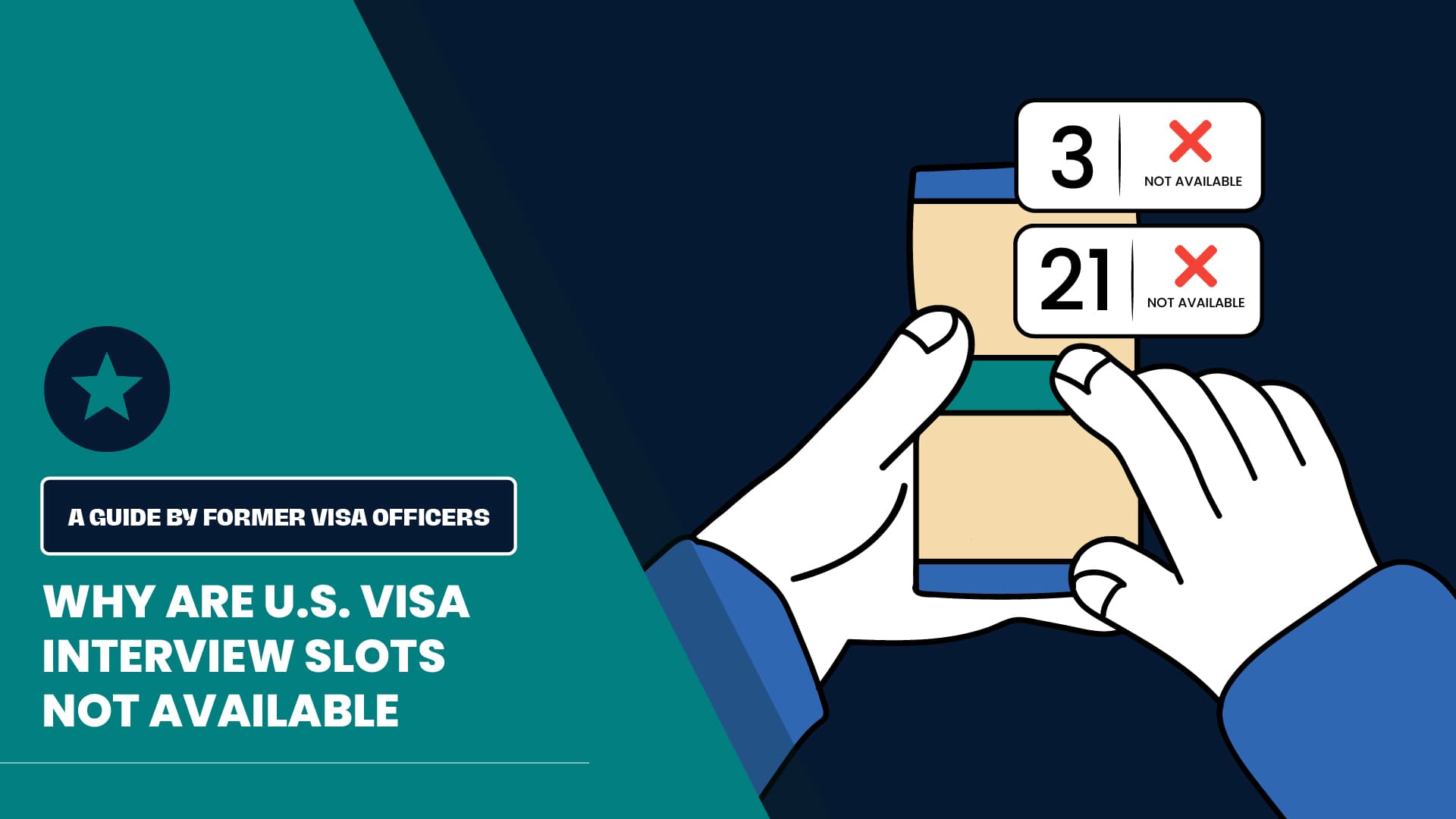The dream of visiting the United States, whether for business, tourism, education, or other purposes, is one that many individuals around the world aspire to achieve. However, navigating the intricate U.S. visa application process can often feel like stepping into a labyrinth of forms, interviews, and documentation. To simplify this process, understanding the significance of the DS-160 form is paramount.
The DS-160 form is more than just a document; it’s your gateway to the U.S. visa application journey. Whether you’re a first-time applicant or seeking to rectify past errors, this form holds the key to presenting your case effectively to consular officers. It collects essential personal, travel, and background information, helping the U.S. Department of State assess your eligibility for a nonimmigrant visa.
In this blog post, we embark on a journey to unravel the significance of the DS-160 form and equip you with the knowledge and insights needed for a successful U.S. visa application. We’ll explore common mistakes applicants make, understand how consular officers utilize the information provided, and discover the importance of seeking expert guidance. By the end, you’ll have a clearer understanding of how to navigate the visa application process with confidence.
So, if you’ve ever wondered what makes or breaks a U.S. visa application, read on as we demystify the DS-160 form and guide you toward realizing your American dream.
Table of Contents
ToggleUnderstanding the DS-160 Form
The DS-160 form stands as a virtual gateway to your aspirations of traveling to the United States. Whether you plan to explore the bustling streets of New York City, embark on an academic journey at a prestigious U.S. university, or engage in business ventures across the nation, this online nonimmigrant visa application form is your starting point. In this section, we’ll delve into what the DS-160 form is and why it holds a position of paramount importance in the U.S. visa application process.
What is the DS-160 Form?
At its core, the DS-160 form serves as a comprehensive questionnaire that individuals worldwide must complete when applying for a temporary U.S. visa. This encompasses a wide range of visa categories, including tourism, business, education, and medical purposes. Furthermore, it’s the go-to form for applicants seeking fiancé(e) visas (K visas).
Why is the DS-160 Form Vital in the Visa Application Process?
The significance of the DS-160 form cannot be overstated. It serves as the primary source of information for the U.S. Department of State and consular officers tasked with evaluating your eligibility for a nonimmigrant visa. The form collects a wealth of critical details about you, such as:
- Personal Information: Your full name, date of birth, place of birth, nationality, gender, marital status, and passport details.
- Contact Information: Your address, phone number, and email.
- Travel Information: The purpose of your trip, intended length of stay, itinerary, and your contact person in the U.S.
- Previous U.S. Travel History: Dates of previous visits, visa status, and any immigration violations.
- Family Information: Details about your parents’ and spouse’s names and dates of birth.
- Work and Education History: Information about your current and past employers, schools attended, and degrees obtained.
- Security and Background Questions: Your responses to questions about criminal convictions, health issues, involvement in terrorist activities, and military service.
Completing the DS-160 form is not merely a paperwork requirement; it’s an opportunity to provide consular officers with insights into your background, intentions, and qualifications for a U.S. visa.
The Process: Electronic Submission and the DS-160 Barcode
The DS-160 form is not a paper document; it’s an electronic form that must be completed and submitted via the Department of State’s website. Upon successful submission, you’ll receive a DS-160 barcode page containing a unique confirmation number. This barcode page is a crucial piece of documentation, as it’s required for scheduling your visa interview appointment.
On the day of your interview, you’ll need to bring the DS-160 confirmation page, along with your passport and other required documents, to the Visa Application Center (VAC) and the U.S. Embassy or Consulate. Consular officers will use the information entered on the DS-160 form to process your visa application and conduct the personal interview. Additionally, your biometric data will be verified, including photographs and fingerprints, captured at the VAC, against the DS-160 form.
In essence, the DS-160 form is your initial introduction to the consular officer and the foundation upon which your visa application process rests. It’s not just about completing a form; it’s about presenting yourself accurately and honestly to make a compelling case for your U.S. visa.
In the next section, we’ll explore the common mistakes applicants often make when filling out the DS-160 form and understand how these errors can impact your visa application.
Section 2: Completing the DS-160 Form
Filling out the DS-160 form is more than a mere formality; it’s your opportunity to provide consular officers with a clear and accurate portrait of your intentions and qualifications for a U.S. visa. In this section, we’ll delve deeper into the process of completing the DS-160 form, emphasizing the crucial information required and the importance of accuracy and honesty.
Essential Information in the DS-160 Form
The DS-160 form gathers a wealth of information, and each detail serves a purpose in the visa application process. Here’s a breakdown of the key information you’ll need to provide:
- Personal Details: Begin by entering your full name, date of birth, place of birth, nationality, gender, and passport details. It’s imperative that this information matches your official documents, such as your passport.
- Contact Information: Share your current address, phone number, and email. Ensure that this information is up-to-date and readily accessible.
- Travel Information: Specify the purpose of your trip, your intended length of stay in the United States, your travel itinerary, and details about your contact person in the U.S. Be concise and accurate in describing your travel plans.
- Previous U.S. Travel History: Provide information about any previous visits to the United States. Include dates of visits, visa status during those visits, and any immigration violations if applicable.
- Family Information: Include details about your parents’ and spouse’s names and dates of birth. This information helps consular officers understand your family ties.
- Work and Education History: Describe your current and previous employers, schools attended, and degrees obtained. Be thorough in presenting your employment and educational background.
- Security and Background Questions: Answer questions related to criminal convictions, health issues, involvement in terrorist activities, and military service honestly and truthfully. Omitting or concealing relevant information can have serious consequences.
Accuracy and Honesty Matter
The DS-160 form isn’t just a checklist to complete; it’s a reflection of your eligibility and intent to visit the United States. Any errors, inconsistencies, or omissions in the form can lead to delays or denials in the visa application process. Therefore, it’s imperative to approach the DS-160 form with diligence:
- Review Before Submission: Before hitting the submit button, take the time to review your DS-160 form online. Ensure that all the information provided is correct, consistent with your passport and other documents, and free of errors.
- Prepare for the Visa Interview: Understand that the consular officer will use the information on your DS-160 form as a basis for the visa interview. Be ready to explain and support any information you’ve provided on the form.
- Avoid TMI (Too Much Information): While it’s essential to be thorough, avoid providing excessive or irrelevant information. Consular officers seek clarity and relevance in your responses, not lengthy narratives or unrelated details.
- Grammar Matters: Present yourself professionally by maintaining good grammar and communication skills throughout the DS-160 form. Grammatical errors can detract from the overall presentation of your case.
In summary, completing the DS-160 form is a pivotal step in your U.S. visa application journey. It’s your chance to convey your intentions and qualifications accurately and honestly. By following these guidelines and taking the process seriously, you can enhance your chances of a successful visa application.
In the next section, we’ll explore common mistakes that applicants often make when filling out the DS-160 form and understand how these errors can affect their visa applications.
Section 3: Common Mistakes to Avoid
Completing the DS-160 form is a critical step in your U.S. visa application, and it’s essential to get it right. Unfortunately, applicants often make common mistakes that can impact their chances of success. In this section, we’ll highlight these errors to ensure you steer clear of them on your journey to obtaining a U.S. visa.
1. Lack of Familiarity with DS-160 Information:
- Mistake: Some applicants fail to thoroughly understand the information entered in their DS-160 form, whether they filled it out personally or sought assistance.
- Impact: Inconsistencies or inaccuracies can arise during the visa interview, potentially causing confusion or doubts about your application.
2. TMI – Too Much Information:
- Mistake: Applicants sometimes provide excessive or irrelevant details within the DS-160 form, including lengthy narratives or emotional pleas.
- Impact: Such information can make you appear unfocused or unhinged to consular officers, detracting from the professionalism of your application.
3. Grammatical Errors:
- Mistake: Failing to maintain good grammar and communication skills while completing the DS-160 form.
- Impact: Grammatical errors can undermine the overall presentation of your case and suggest a lack of attention to detail.
4. Incorrect Visa Classification:
- Mistake: Selecting the wrong visa category from the “Purpose of Travel to U.S.” pull-down menu.
- Impact: Misclassifying your visa category can lead to confusion and potentially a mismatch between your visa category and your intended purpose of travel.
5. Incomplete or Incorrect Names:
- Mistake: Providing incomplete or incorrectly spelled names, using initials, abbreviations, or nicknames.
- Impact: Such errors can cause discrepancies between your DS-160 form and official documents, raising questions about your identity.
If you’ve already submitted the DS-160 and need to make corrections, check out our guide on how to edit your DS-160 form
6. Incomplete Education History:
- Mistake: Failing to provide complete and accurate information about your education history, including schools, dates of attendance, degrees obtained, and fields of study.
- Impact: Inadequate education information can suggest a lack of transparency and affect the assessment of your qualifications.
7. Incomplete Travel History:
- Mistake: Neglecting to offer complete and accurate details about your previous U.S. travel history, such as dates of visits, visa status, and any immigration violations.
- Impact: Omitted travel history can raise suspicions and affect the evaluation of your intentions and eligibility.
8. Inaccurate Security and Background Questions:
- Mistake: Providing false or misleading information or omitting relevant details when answering security and background questions.
- Impact: Such inaccuracies can lead to visa denial or refusal on grounds of fraud or misrepresentation, with potential legal consequences.
Avoiding these common mistakes is crucial to a smooth visa application process. Your DS-160 form serves as your initial impression on consular officers, so presenting clear, accurate, and honest information is vital.
In the next section, we’ll explore how these mistakes can impact the visa application process, including potential delays, confusion, and denials.
Section 4: The Role of the DS-160 in Visa Approval
As you navigate the intricate world of U.S. visa applications, understanding the pivotal role of the DS-160 form is essential. This section sheds light on how consular officers utilize the information provided in your DS-160 form during the visa approval process and why accuracy matters.
1. Personal Introduction:
Imagine your DS-160 form as your introduction to the consular officer. It’s the first document they review before meeting you in person. The form provides the officer with essential information about your background, intentions, and qualifications for a U.S. visa. They’ll examine key details such as your name, date of birth, nationality, and travel history.
2. Swift Assessment:
Consular officers are often under pressure to adjudicate as many visas as possible within limited timeframes. To make swift but informed decisions, they rely heavily on the DS-160 form. It allows them to gain quick insights into your background and travel plans. For example, they might take note of where you plan to stay in the U.S. or even your address back in your home country.
3. Socioeconomic Evaluation:
One of the pillars of visa approval is assessing your socioeconomic status. Through the DS-160 form, officers can quickly gather information related to your financial stability. Details like your place of residence and employment history can help them gauge your eligibility. For instance, residing in a prestigious area might indicate financial stability, while frequent job changes might raise questions.
4. Professionalism Matters:
The DS-160 form is not the place for emotional pleas or informal language. It’s crucial to approach the form with professionalism, using correct grammar and sticking to the facts. Consular officers expect clear, concise, and well-structured responses. Using inappropriate language or presenting yourself in an unprofessional manner, such as typing emotional messages to the officer, can have a negative impact.
5. Highlighting Internships:
For certain visa categories, such as F1 student visas, including information about your internships can be critical. In the United States, internships can be a symbol of excellence, and officers value them. Even if your internship was unpaid, it’s essential to mention it in the DS-160 form, along with details about your roles and responsibilities.
6. Knowing Your DS-160:
Consular officers have limited time during the interview, often as short as one minute per applicant. Therefore, they rely heavily on the DS-160 form to understand your case quickly. It’s crucial that you not only fill out the form accurately but also understand the information you’ve provided. Be prepared to discuss and support the details during the interview.
In essence, the DS-160 form serves as a concise yet comprehensive snapshot of your eligibility and intent to visit the United States. It’s not just a formality; it’s a crucial part of the consular officer’s decision-making process. Any discrepancies, errors, or inconsistencies in the form can lead to delays, confusion, or even visa denials.
In the next section, we’ll explore how mistakes in the DS-160 form can affect the visa application process, potentially causing delays, confusion during interviews, or even visa refusals.
Section 5: Seeking Guidance and Expertise
The DS-160 form plays an important role in your U.S. visa application, and the stakes are high. Making errors or overlooking critical details can have significant repercussions. In this section, we’ll explore the importance of seeking guidance and expertise when navigating the DS-160 and the overall visa application process.
1. The Complex Landscape:
The U.S. visa application process is a complex and dynamic landscape. It involves numerous visa categories, each with its own set of requirements and nuances. Navigating this terrain can be overwhelming, especially for first-time applicants. Understanding the intricacies of the DS-160 form and its implications requires expertise.
2. The Impact of Errors:
Errors or inconsistencies in the DS-160 form can lead to delays, confusion during interviews, or even visa denials. It’s not just about filling in blanks; it’s about presenting a clear and compelling case for your visa. Seeking guidance can help you avoid these pitfalls.
3. Expert Insights:
Former consular officers and visa experts possess invaluable insights into the visa application process. They’ve been on the other side of the interview desk and understand what consular officers look for in a successful applicant. Their guidance can help you present yourself in the best possible light.
4. Resume and Interview Preparation:
Expert guidance extends beyond the DS-160 form. It can encompass resume preparation, interview training, and understanding the specific requirements of your visa category. For example, if you’re applying for a work-related visa, having a well-crafted resume can make a significant difference.
5. Tailored Advice:
Every applicant is unique, and their circumstances vary. Seeking guidance allows you to receive personalized advice tailored to your situation. Whether you have a prior visa refusal, unique travel plans, or specific questions, experts can provide answers and strategies tailored to your needs.
6. Maximizing Your Chances:
In a world where visa approval often hinges on brief interactions with consular officers, maximizing your chances is paramount. Expert guidance can help you make the most of those critical minutes, ensuring that your DS-160 form, interview, and supporting documents align to create a strong case.
7. The Udeti Advantage:
One resource available to applicants seeking guidance is Udeti, founded by Yvette Bansal, a former U.S. visa officer with extensive experience. Udeti understands the positive impact of immigration and tourism and is dedicated to providing accurate visa services.
Udeti is a resource for clarity in the visa interview process, helping applicants succeed in realizing their American dreams. With guidance from experts like Yvette Bansal and her team, you can navigate the DS-160 form and the entire visa application process with confidence.
In the final section of this blog, we’ll wrap up our discussion and provide you with actionable takeaways to ensure your DS-160 form and visa application journey are as smooth as possible.
Conclusion
The DS-160 form is more than just a piece of paperwork; it’s your gateway to achieving your American dreams. It serves as your initial introduction to the consular officer and plays a pivotal role in your U.S. visa application. As we’ve explored in this blog, understanding and completing the DS-160 form accurately is vital for a successful visa journey.
Here are some key takeaways:
1. Precision Matters: Accuracy and honesty in filling out the DS-160 form are non-negotiable. Any errors, inconsistencies, or omissions can lead to delays, confusion during interviews, or even visa denials.
2. Professionalism Is Key: Approach the DS-160 form with professionalism. Use proper grammar, avoid emotional pleas, and maintain a concise and focused approach.
3. Seek Expert Guidance: Navigating the complex world of U.S. visa applications can be challenging, especially if you’re unfamiliar with the process. Seeking guidance and expertise from former consular officers and visa experts can make a significant difference in presenting your case effectively.
4. The Udeti Advantage: Consider resources like Udeti, founded by Yvette Bansal, a former U.S. visa officer with extensive experience. Udeti is dedicated to providing accurate visa services and helping applicants succeed in realizing their American dreams.
Your DS-160 form is your opportunity to present a clear and compelling case for your U.S. visa. With the right guidance and a commitment to accuracy, you can enhance your chances of a successful visa application.
Remember, the U.S. visa application process can be challenging, but it’s also full of opportunities. By approaching it with diligence, professionalism, and expert guidance, you can turn your aspirations into reality and create a brighter future in the United States.
If you have further questions or need assistance with your DS-160 form or visa interview, consider booking a consultation with our visa experts. Your American journey begins with the DS-160 form, and with the right support, you can make it a success.
Thank you for reading this blog, and we wish you the best of luck in your U.S. visa application journey!
(This blog post was written by Yvette Bansal, former consular officer & Kausar Shaikh, Content Strategist.)
DISCLAIMER:
This blog does not endorse or advocate for any illegal activities. All content presented here is intended for educational purposes only. The viewpoints expressed do not constitute legal advice and are solely based on the writer’s opinions and experiences. Please use the information provided responsibly. Any advice given is of a general nature and should be applied to your specific circumstances with caution and consideration.
Copyright © 2024 UDETI LLC. All rights reserved.

